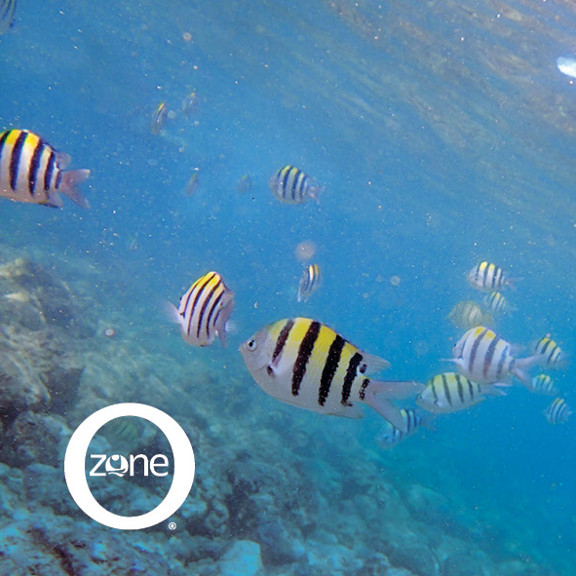言語を選択
通貨を選択

3リーフセーフおよびサンセーフに対応するための大きなヒント
多くの日焼け止めには、貴重なサンゴ礁に有害な化学物質が含まれているという噂を聞いたことがありますか?本当です。実際、ハワイ州は最近、オキシベンゾンとオクチノキサートという化学物質を州内での流通を禁止した最初の州になりました。
サンゴ礁は、私たちの海の複雑な生態系の継続的な健康と海岸線の保護に不可欠です。彼らは、癌、心臓病、およびその他の病気を治療するための新薬の供給源でさえあります。これらは、 年に OZONE(アウトリガーのZONE)を発売した理由のほんの一部です。以前に私たちがそれについて話しているのを聞いたことがあるでしょう。オゾンは、2014 サンゴ礁の保全 に尽力する 私たちの世界的な保全イニシアチブ です。
私たちのサンゴ礁は、その生存に多くのリスクに直面していると同時に、紫外線(UV)放射は、私たちの体の最大の器官である皮膚の健康に対する真の脅威です。では、どうすれば両方のサンゴ礁を保護し、医師の指示に従うことができるのでしょうか。
ここでは、海の健康と体の健康を同時に守るための3つの大きなヒントをご紹介します。
1.防護服を着用してください。太陽の下で外にいるときは、顔と肩を覆うことが重要です。つばの広い帽子や、袖付きのしっかりと織られた生地のシャツは、始めるのに最適な場所です。泳ぐときは、ラッシュガード(水泳用に設計されたシャツ)を着用してください。そして、サングラスもお忘れなく!
2。 日陰にとどまる–良い日陰。 空の大部分を隠す大きな天蓋を持つ木々、建物に背を向けたパラソル、ビーチテントは、良い保護日陰を提供できます。直射日光が最も有害ですが、すべての日陰が同じように作られたわけではないことを覚えておくことが重要です。紫外線は見たり感じたりすることはできず、水、砂、コンクリート、さらには草から反射する可能性があります。間接的な日光にさらされているかどうかを知る良い方法は、空がどれだけ見えるかです。忘れてはいけないのは、雲は紫外線を拡散させ、それを止めないということです。
3。 サンゴ礁に安全な日焼け止めを使用してください。 安全な種類は、酸化亜鉛や二酸化チタンなどの成分を使用して太陽光線を反射するミネラル日焼け止めです。これらのタイプは、化学的な日焼け止めのように肌に吸収されません。ほとんどのドラッグストアでは、有害な化学物質であるオキシベンゾンやオクチノキサート(またはメトキシケイヒ酸オクチル)を含まない日焼け止め製品がたくさんあります。 また、サンゴ礁に安全な日焼け止めは、お気に入りのアウトリガーホテルで購入することもできます。サンゴ礁に優しい選択をする消費者が増えるにつれて、私たちと海の両方を安全に保つ日焼け止めの選択肢がますます増えるでしょう。